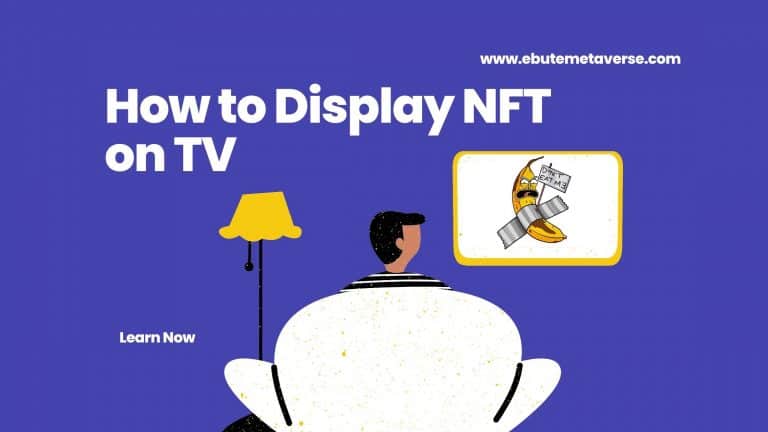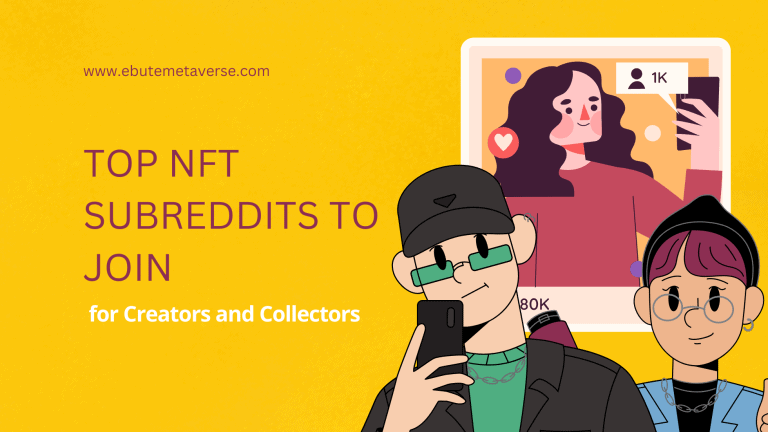NFT Drops Explained: Read Before Participating in 2024
The meaning of an NFT drop has changed since the 2021 non-fungible token rally. So what does NFT drop mean in 2024?
An NFT drop refers to the initial sale offering of a new NFT collection. It’s the first time a set of unique NFTs become available for purchase. NFT drops provide an exciting opportunity for buyers to get in early on a new NFT release before it gains mainstream popularity. For sellers, it’s a way to drum up interest in a new NFT project and distribute tokens to early supporters.
With the attention that NFTs (non-fungible tokens) get nowadays, you’ll surely want to know when the next blue-chip NFT will launch.
This article provides all you need to know about NFT drops, including:
What Does an NFT Drop mean?
An NFT drop is the exact date and time that a particular NFT collection will be available to the public for minting. The NFT artist or team informs the public (just the internet, actually) about their new NFT project and provides a date and time from when that NFT would be available for public minting.
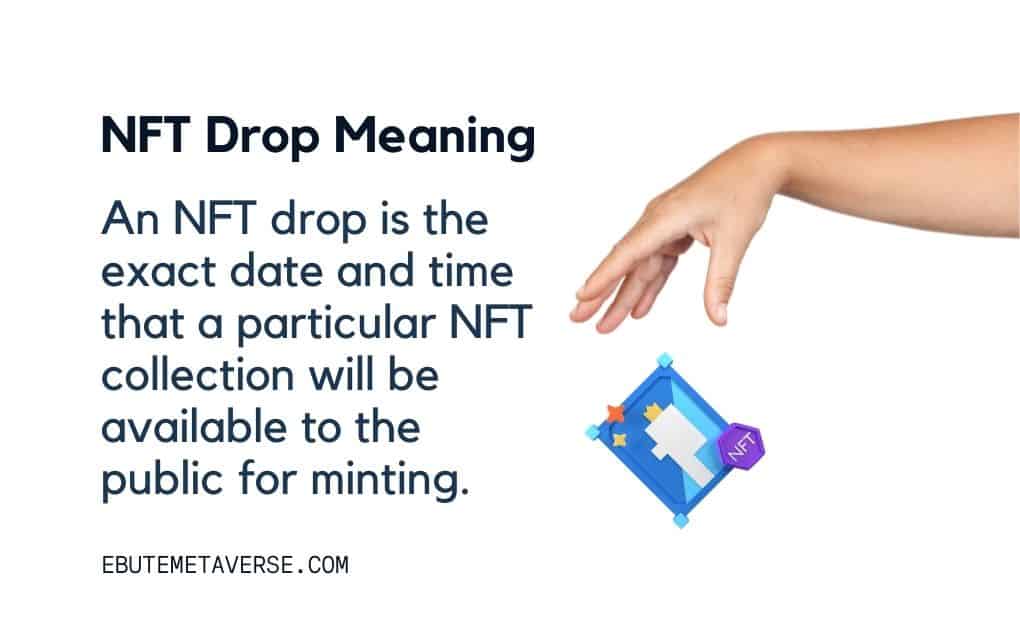
NFT drops often take the form of a limited-time sale, with a fixed number of NFTs up for grabs. Popular NFT drops will sell out quickly, sometimes in seconds. This creates a rush of demand from buyers hoping to secure a rare NFT before it’s gone.
The limited-supply scarcity heightens the exclusivity of each NFT from the collection.
How Do NFT Drops Work?
NFT drops involve several key participants coordinating carefully timed product launches and marketing campaigns. Here is an overview of how a typical NFT drop unfolds:
Project conception:
An artist, creative agency, or entrepreneur comes up with an idea for an NFT collection and begins designing the artwork. They’ll need to decide on the graphics style, number of NFTs to mint, price point, and blockchain platform.
Community building:
In the months leading up to an NFT drop, the project creators will gradually tease out details to the public for hype-building. They’ll set up Discord servers and Twitter accounts to engage early supporters and influencers.
Whitelisting:
Creators will set up a whitelisting process to allow early community members first access to the NFT drop. This helps loyal followers secure an NFT and prevents bots from scooping them all up at launch.
Marketing ramp up:
As the launch date approaches, marketing activity intensifies. Paid promotions, influencer endorsements, press releases, and viral social media postings help drive mainstream buzz.
Minting on blockchain:
The NFTs are programmatically generated and minted on chain shortly before the public sale begins. The metadata is configured to contain properties like image files, attributes, descriptions, etc.
Drop date arrives:
At the predetermined blockchain block height, the smart contract’s public sale function triggers, and the race begins. The frantic activity crashes exchanges and clogs up blockchains. Within minutes, an entire collection can sell out.
Post-drop chaos:
As winners and losers emerge, the community reacts. Sold out NFTs quickly get listed on secondary markets. Speculators flip them for profit amidst price volatility. The team starts revealing roadmaps for the future.
Aftermath:
In the hours and days after an NFT drop, the trading activity and market value will level out. Some buyers get stuck holding less desirable NFTs without enough liquidity to flip them. The most devoted community members stick around and engage online with plans for exclusive benefits down the road.
Further Reading: How Long Should You Hold An NFT [And The Best Time to Sell]
Where can I find big upcoming NFT drops?
With new NFT projects launching on a daily basis, it can be hard to keep up with all the upcoming drops on the calendar. Luckily, there are a variety of resources you can leverage to research and discover drops before they hit the market.
Here are some places to find and track information on upcoming NFT releases:
| Source | Description |
|---|---|
| Launch Calendars | Sites like Ebutemetaverse Calendar, NFTcalendar.io, and Nftdropscalendar.com list upcoming confirmed NFT drop dates and details. |
| Social Media | Follow NFT influencers and curation accounts on Twitter and Instagram that announce drops. |
| Discord Channels | Join Discord servers for individual projects to get insider info directly from creators. |
| NFT Communities | Subreddits and forums like r/NFT and r/NFTCollect discuss rumors about planned releases. |
| Artist Websites | Individual artists will announce forthcoming drops and roadmaps on their official sites. |
| Marketplaces | Platforms like OpenSea and Rarible promote upcoming drops happening on their sites. Check out the top marketplaces for NFTs. |
| Whale Groups | Private “alpha” groups on Discord like Alpha Leaks provide insider info and drop signals. |
| Blockchain Analytics | DappRadar and CryptoSlam track minting activity on chains to identify new collections. |
| Gaming Servers | For gaming NFTs, join servers for metaverses like The Sandbox and Decentraland to hear about releases. |
| Conference Talks | Creators preview upcoming drops during NFT and blockchain conference talks and events. |
How to Participate in an NFT Drop
Participating in a hot NFT drop takes research, technical readiness, swift reflexes, and a bit of luck. Here are some key tips for preparing to maximize your chances of success:
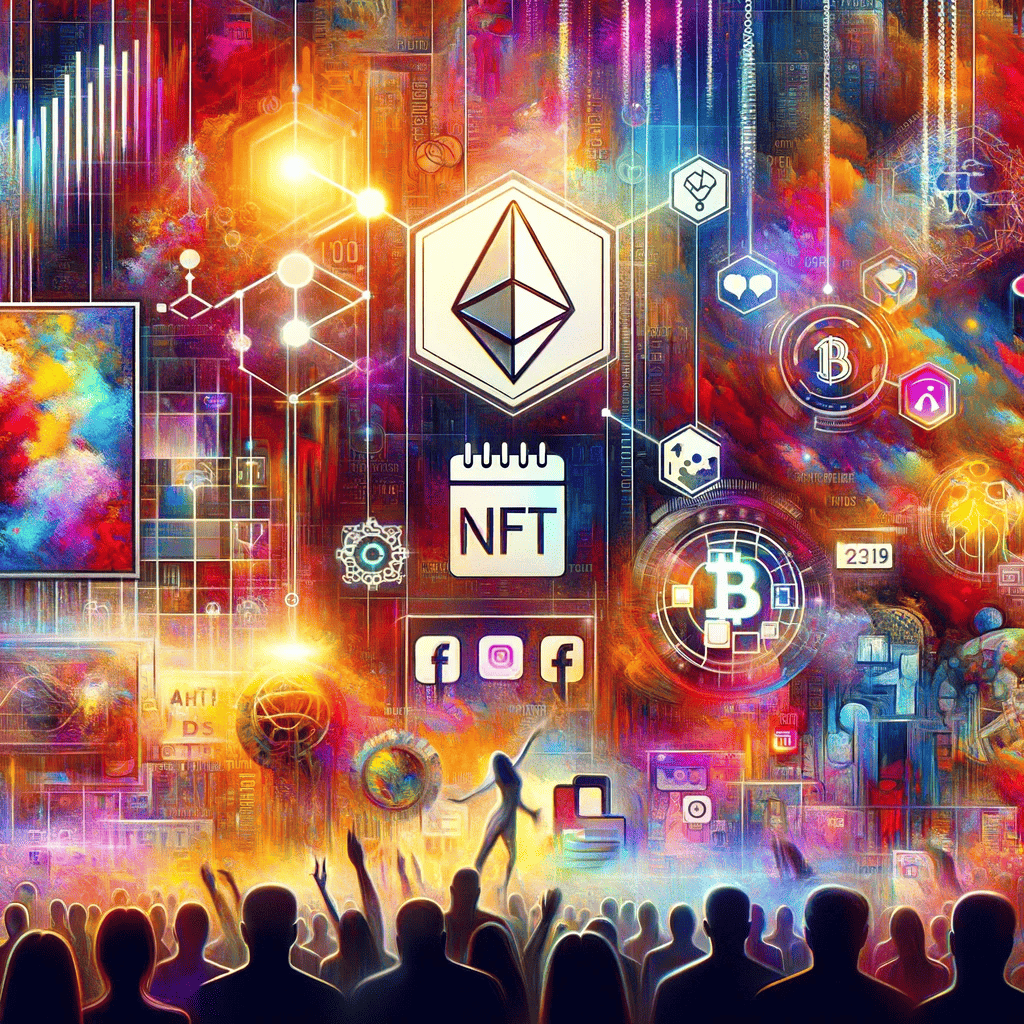
Steps to prepare for an NFT drop
- Research the project extensively: join Discord and social channels, understand the roadmap, study the team, and review all the artwork in the collection. Become an expert on the project.
- Join the whitelist: Projects will often whitelist members to allow early access before public sales open.
- Prepare your crypto wallet: select a compatible wallet like MetaMask, fund it with ample ETH or crypto to cover the NFT cost plus gas fees, and back up the seed phrase securely.
- Connect your wallet to marketplaces: Link your wallet to the platform or marketplace you’ll buy or trade on, like OpenSea. Some drops prefer to use their own minting website.
- Test transaction speeds: Make test transfers to see how quickly transactions currently process. Use gas price analysis tools.
- Setup multiple devices: Have the wallet accessible across 2-3 connected devices in case one crashes during minting.
- Establish backup plans: have backup browsers ready, know your minting order across devices, and create a troubleshooting checklist for technical issues.
- Prepare for launch time: Be ready to click fast right when minting opens, approve gas fees instantly, and persist through failed transactions.
Things to keep in mind when buying NFT drops
Not many people would be able to resist owning an NFT. Not with all the hype on social media by influencers and celebrities. However, there are things to keep in mind when buying NFT drops.
Always research the NFT first.
Most NFTs are digital art; on the internet, a screenshot is all you need to copy it. Of course, that’s not right, but NFTs are a new resource and don’t have many laws protecting them. So, you can’t take someone to court for using your NFT as their PFP.
You should always DYOR an NFT drop before purchasing or minting. You should ensure you’re buying an NFT from its original artist. You should also make sure the artist is reputable.
Never budget more than you are willing to lose.
Just like cryptocurrency, most people purchase NFTs so that they can sell them when their value appreciates. However, this isn’t always the case. Sometimes the value of an NFT falls, and it’s unavoidable.
So, it’s a little like gambling; never spend more than you are willing to lose. This is to avoid any heartbreaks, or the usual “NFTs are a big Ponzi scheme” lines.
Accept that not all NFTs are valuable.
So, no matter how much it was hyped, some NFTs would fail to increase in value for no apparent reason. NFTs are valuable for several reasons, and understanding them can help you decide the end outcome of any project.
Accept that some NFTs might not be for you.
Some NFTs out there are unique, like the only one in existence. You should accept that there is every chance someone else gets to own that NFT. This prevents you from being caught up in the moment and spending more than you planned to at an NFT auction.
Things To Avoid When Buying NFT Drops
When attempting to purchase scarce and valuable NFTs from hot drops, avoid these novice mistakes:
- Buying on the wrong blockchain: Make sure your wallet is set up to purchase on the specific blockchain the NFTs are launching on to avoid confusion.
- Getting phished: Only visit official sites and tools. Phishing attempts will try to steal your wallet credentials.
- Using the wrong wallet: Make sure your wallet is compatible. Some only support certain cryptocurrencies or NFT standards.
- Not checking gas fees: Ethereum gas costs can crush your profit margin. Ensure your bid exceeds the gas.
- Blindly following hype: Do your own research to make informed decisions aligned with your collection strategy. Don’t just irrationally chase trends.
- Not securing the wallet: Take precautions to protect your wallet’s seed phrase. Lost keys mean a permanent loss of access to your NFTs.
- FOMO buying the top: When the hype peaks, it’s easy to overpay at the top. Have discipline with bidding and walk away rather than chasing.
- Misunderstanding rarity: Judging rarity just by NFT images is naive. Analyze the metadata and attributes to properly appraise value.
NFT Drop Strategies for Sellers
For artists, entrepreneurs, and creators interested in launching their own successful NFT drops, here are some proven strategies to consider:
- Hone your artistic style: Develop a strong, distinctive visual aesthetic for your NFT collection. Unique traits, varied rarities, and coherent branding are important.
- Build engaged communities: Use Discord, Twitter, and other platforms to gradually create excitement around your project. Be transparent, listen to feedback, and foster a sense of inclusion.
- Develop utility and access: Give your NFTs creative functionality such as digital or physical rewards, gaming integration, event access, royalties, governance rights, etc. to entice demand.
- Structure a fair minting process: Put measures in place like whitelisting, allowlists, and tiered pricing structures to counter bots and ensure equitable public access.
- Partner with influencers: Strategic promotions from creators with engaged followings can amplify early traction leading up to the drop date. Offer perks for support.
- Stage iterative project rollouts: Introduce new NFTs across multiple drops over time to sustain interest rather than blowing your load all at once.
- Provide exclusive benefits: Offer community-specific privileges, content access, or interoperability with future projects to attract long-term holders.
- Time the market strategically: Study crypto price cycles and trending themes to determine the optimal timing for your NFT launch for maximum visibility and demand.
- Promote on social media: market your project enthusiastically across Twitter, Instagram, TikTok, YouTube, and other platforms. Advertise, post teasers, and collaborate with important accounts within your niche.
- Get press coverage: Outreach to journalists and influencers from cryptocurrency and technology media outlets like CoinDesk, CoinTelegraph, DCentral, Bankless, etc. to earn credible publicity.
- Leverage direct marketing: Send out previews, announcements, and special offers directly to fans via email and push notifications leading up to the drop date.
- Make minting easy and reliable: Thoroughly test your NFT smart contracts and auction site functionality prior to launch. Provide clear minting instructions and support.
Examples of Successful NFT Drops
Some of the most legendary and lucrative NFT drops to date include:
- CryptoPunks: Launched in June 2017 as one of the very first NFT projects on Ethereum, the 10,000 algorithmically generated pixel art punks sparked the NFT collecting trend. The rarest punks now sell for millions.
- Bored Ape Yacht Club: This collection of 10,000 unique cartoon apes releasing in April 2021 cost 0.08 ETH at mint. The cheapest apes now fetch over 100 ETH a piece due to their popularity as online status symbols.
- Axie Infinity: These Pokemon-inspired battle pets bred on the Ethereum blockchain grossed over $1.3 billion in NFT trading volume in Q3 2021. Competitive gameplay drives demand for rare Axies with special abilities.
- Doodles: The 10,000 algorithmically generated cartoon Doodles struck a chord with their cute and quirky hand-drawn aesthetic. The entire collection sold out in minutes for over $27 million in October 2021.
- Azuki: Launched in January 2022, this anime-inspired collection netted $117 million over multiple drops thanks to a dedicated community on Discord. Azuki owners gain access to the metaverse game Land.
- Moonbirds: In April 2022, the sale of 10,000 algorithmically generated owl avatars brought in $258 million. The record-breaking drop was facilitated by the PROOF whitelisting system.
As these examples show, compelling art, clever utility, and community-building are essential ingredients for a profitable NFT drop.
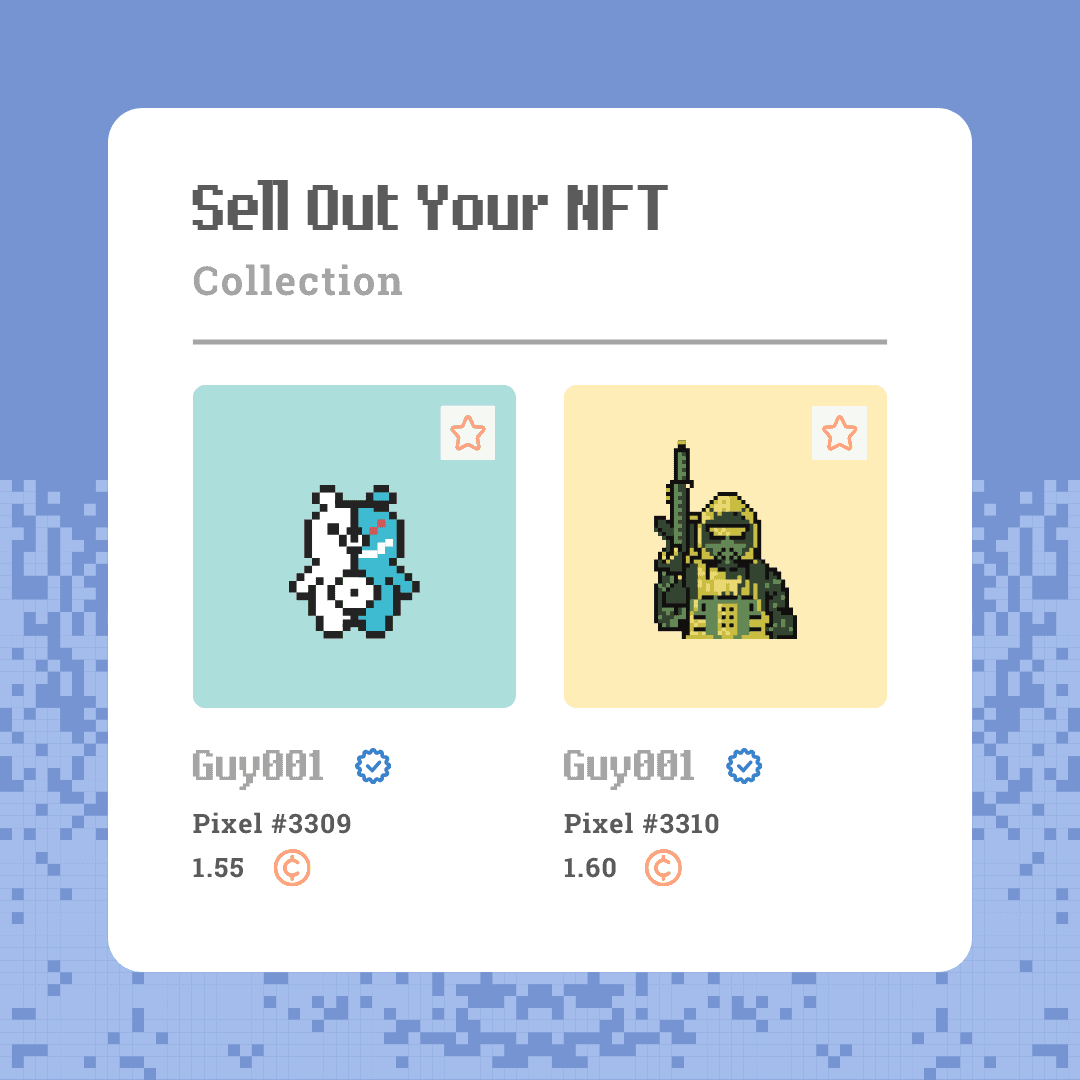
Now on sale
The “Ultimate Guide to NFT Project Success: From Idea to Launch” is the comprehensive blueprint you need to launch a successful NFT project that SELLS OUT!
Frequently Asked Questions
How do I know what NFT to buy?
You can know the right NFT to purchase by reading the market conditions and forecasting which NFT would be worth investing in. Like a high-risk gambling game, deciding to buy an NFT can be seen as taking a risk and hoping that the NFT increases in value.
Can I create my own NFT?
You can create your own NFT. All you need is a digital asset like an image, a song, a book, a video, or even a tweet. Then you look for an NFT marketplace to mint, or you can use a blockchain exploration tool like Etherscan.
Are NFT drops free?
Most NFT drops are not free; the artists release their NFTs for people to buy them after all. However, that doesn’t mean that there aren’t some that are free. You just need to know where to find them. You can search for free mint NFT drops on Twitter. Just ensure to DYOR and use a burner wallet to mint.

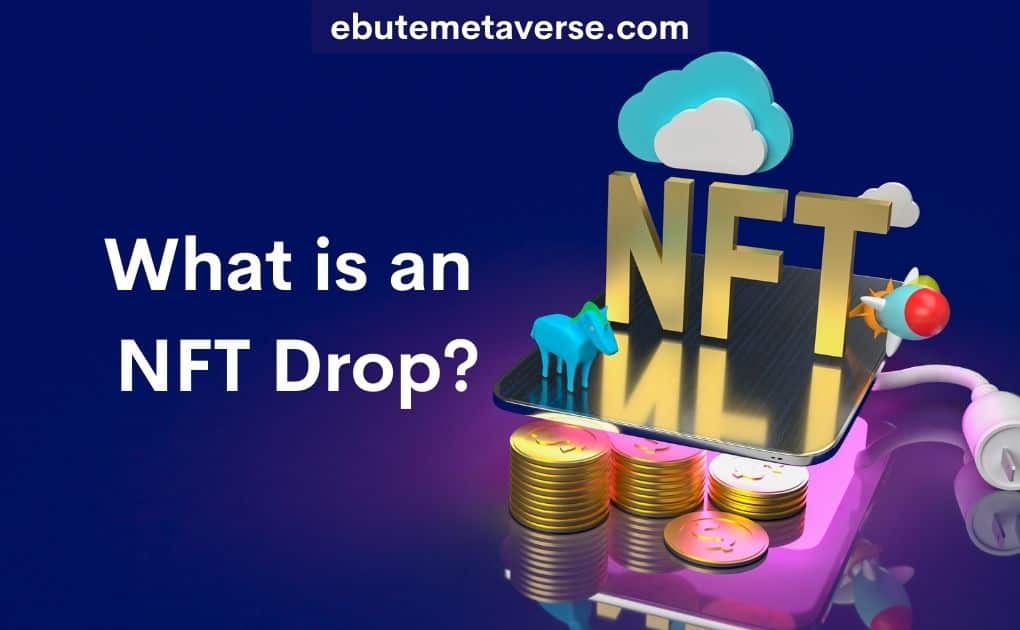

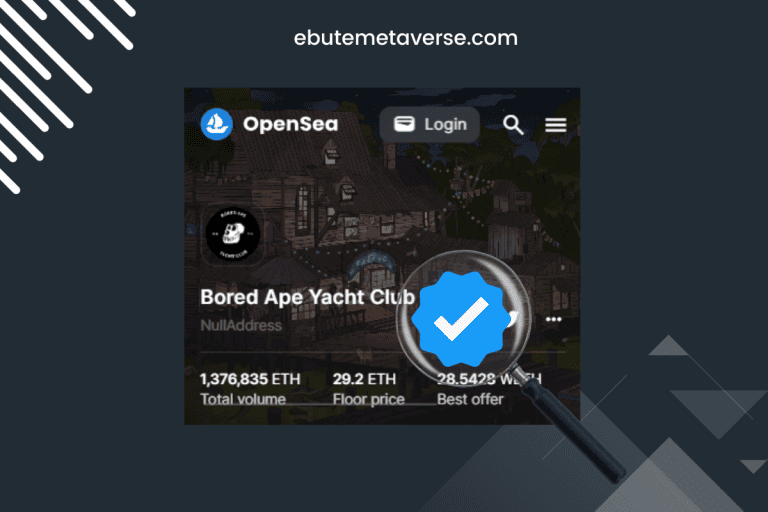
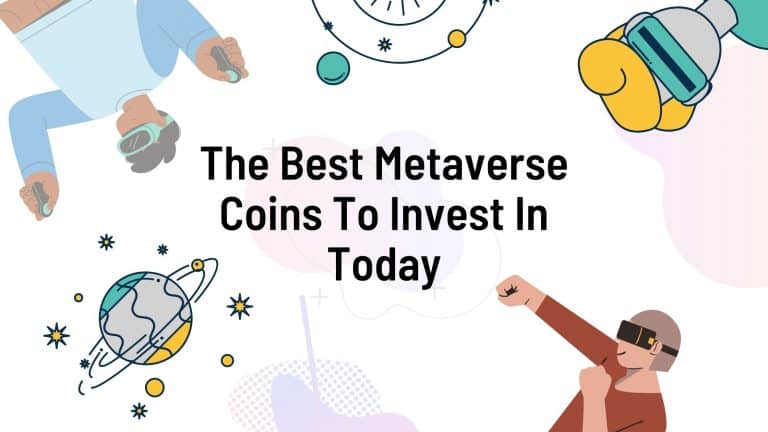
![Can You Get NFTs for Free? Top 10 Ways [Free Mints, Giveaways, and More] 9 Can You Get NFTs for Free? Top 10 Ways [Free Mints, Giveaways, and More]](https://ebutemetaverse.com/wp-content/uploads/2022/11/get-nfts-for-free-768x432.png)
